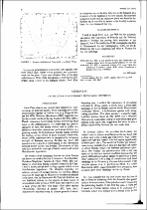JavaScript is disabled for your browser. Some features of this site may not work without it.
- ResearchSpace
- →
- Research Publications/Outputs
- →
- Journal Articles
- →
- View Item
| dc.contributor.author |
Midgley, JJ

|
|
| dc.date.accessioned | 2007-06-29T08:44:23Z | |
| dc.date.available | 2007-06-29T08:44:23Z | |
| dc.date.issued | 1993-05 | |
| dc.identifier.citation | Midgley, JJ. 1993. Asteraceae - an evaluation of hutchinsons beetle-daisy hypothesis. Bothalia, Vol. 23(1), pp 70-72 | en |
| dc.identifier.issn | 0006-8241 | |
| dc.identifier.uri | http://hdl.handle.net/10204/773 | |
| dc.description | Copyright: 1993 National Botanical Institute | en |
| dc.description.abstract | There are cape Asteraceae species that have conspicuous dark markings on their ray florets. Such markings are usually interpreted as guides of various sorts. It is thus suggested that the dark raised marks on the ray florets of Gorteria diffusa thumb mimicked herbivorous beetles burrowing head down in the inflorescences. It is also noted that this species appeared to have few beetle visitors and to suffer less herbivory than other Asteraceae (such as an Arctotis sp.) growing nearby. The marks repel the beetles. However in this review of plant mimicry worldwide, it is considered an exceptionally intriguing example of Batesian mimicry. Despite the fact there still appears to be a dearth of information on the interaction between beetle-daisies and beetles, hence the purpose of this note is to extend the concept of beetle-daisies and to test Hutchinson’s hypothesis. | en |
| dc.language.iso | en | en |
| dc.publisher | National Botanical Institute | en |
| dc.subject | Asteraceae species | en |
| dc.subject | Beetle-daisies | en |
| dc.subject | Hutchinson’s hypothesis | en |
| dc.subject | Herbivorous beetles | en |
| dc.subject | Plant sciences | en |
| dc.title | Asteraceae - an evaluation of hutchinsons beetle-daisy hypothesis | en |
| dc.type | Article | en |
| dc.identifier.apacitation | Midgley, J. (1993). Asteraceae - an evaluation of hutchinsons beetle-daisy hypothesis. http://hdl.handle.net/10204/773 | en_ZA |
| dc.identifier.chicagocitation | Midgley, JJ "Asteraceae - an evaluation of hutchinsons beetle-daisy hypothesis." (1993) http://hdl.handle.net/10204/773 | en_ZA |
| dc.identifier.vancouvercitation | Midgley J. Asteraceae - an evaluation of hutchinsons beetle-daisy hypothesis. 1993; http://hdl.handle.net/10204/773. | en_ZA |
| dc.identifier.ris | TY - Article AU - Midgley, JJ AB - There are cape Asteraceae species that have conspicuous dark markings on their ray florets. Such markings are usually interpreted as guides of various sorts. It is thus suggested that the dark raised marks on the ray florets of Gorteria diffusa thumb mimicked herbivorous beetles burrowing head down in the inflorescences. It is also noted that this species appeared to have few beetle visitors and to suffer less herbivory than other Asteraceae (such as an Arctotis sp.) growing nearby. The marks repel the beetles. However in this review of plant mimicry worldwide, it is considered an exceptionally intriguing example of Batesian mimicry. Despite the fact there still appears to be a dearth of information on the interaction between beetle-daisies and beetles, hence the purpose of this note is to extend the concept of beetle-daisies and to test Hutchinson’s hypothesis. DA - 1993-05 DB - ResearchSpace DP - CSIR KW - Asteraceae species KW - Beetle-daisies KW - Hutchinson’s hypothesis KW - Herbivorous beetles KW - Plant sciences LK - https://researchspace.csir.co.za PY - 1993 SM - 0006-8241 T1 - Asteraceae - an evaluation of hutchinsons beetle-daisy hypothesis TI - Asteraceae - an evaluation of hutchinsons beetle-daisy hypothesis UR - http://hdl.handle.net/10204/773 ER - | en_ZA |






